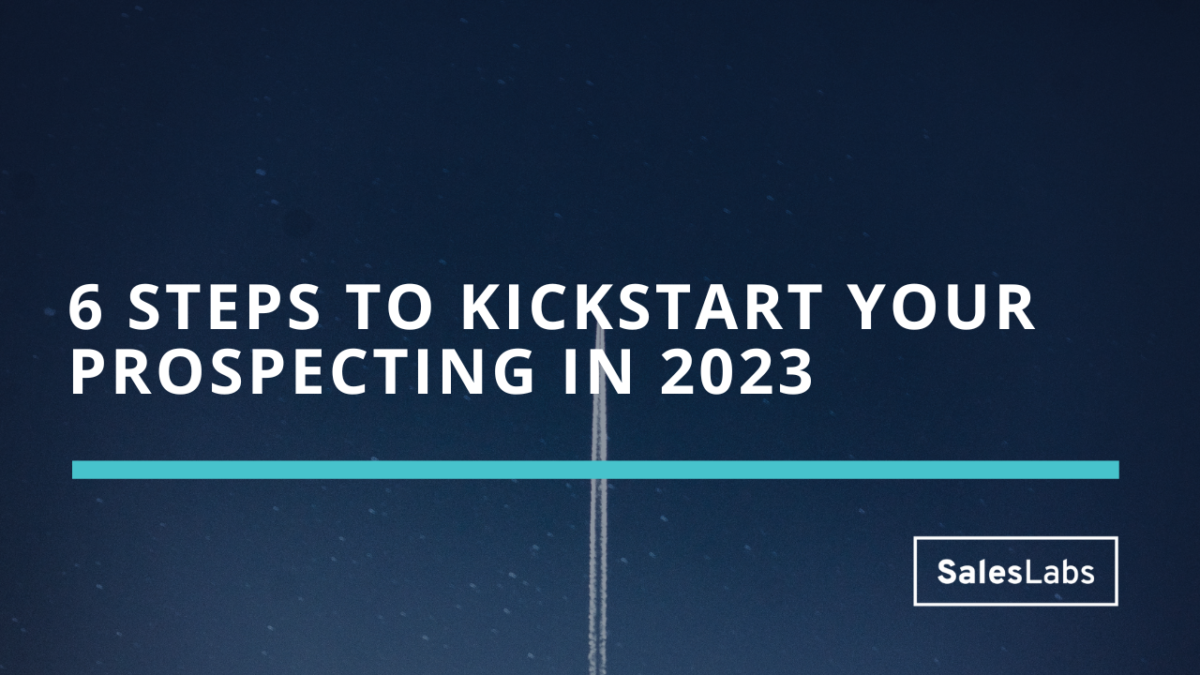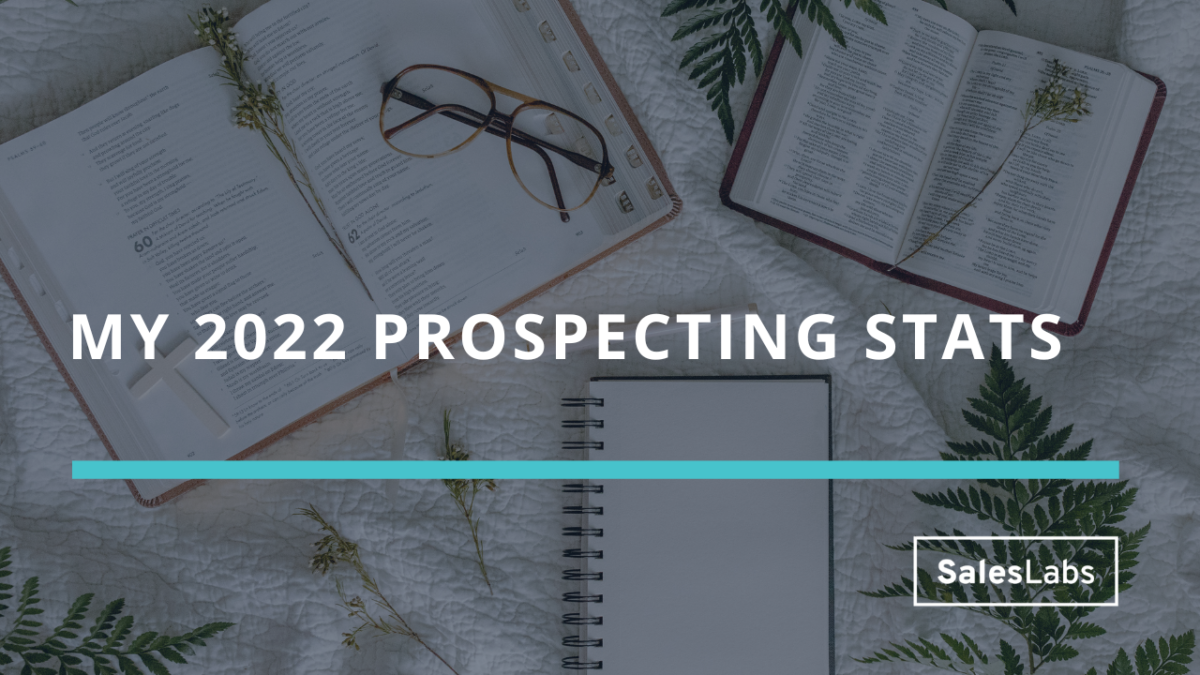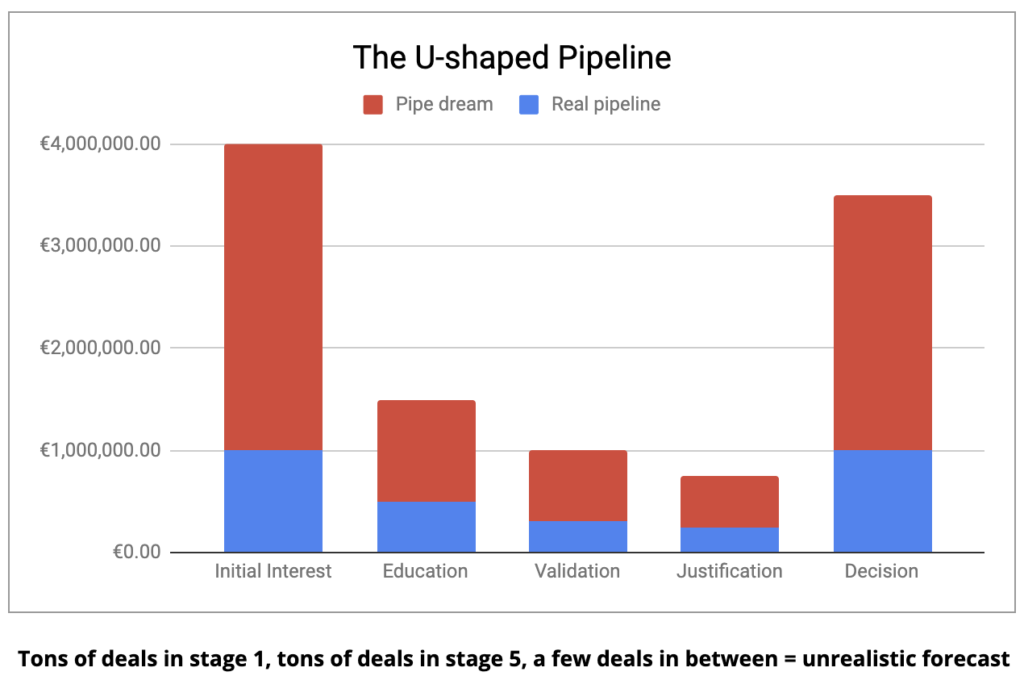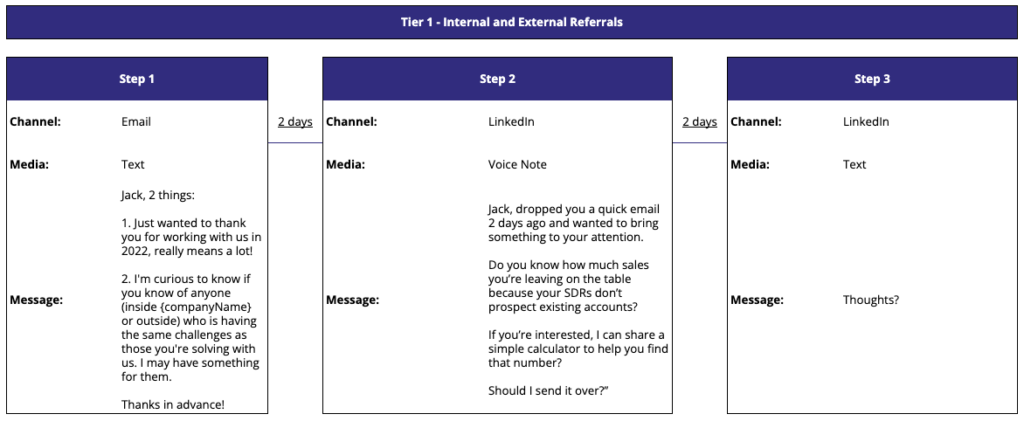6 steps to kickstart your prospecting in 2023
In today’s issue, I’m going to share a simple, 6-steps process I’m currently using, as I’m restarting my prospecting effort.
If you can replicate this process, you’ll set yourself for success in early Q1, by starting more conversations, and booking more meetings.
Unfortunately, 2023 isn’t looking as promising as 2022, and most salespeople are already wired to believe they won’t be successful.
In 2023, a prospecting system will be more important than ever
And without a solid outbound prospecting system, a few challenges will arise:
Challenge #1: You’ll get few replies: as most replies are obtained through follow-ups, you’ll miss conversations by not having a system.
Challenge #2: Your results will be inconsistent: you’ll prospect in bursts, then stop, which will attract scrutiny on your performance.
Challenge #3: You’ll lose confidence quickly: you’ll start worrying about your capacities, and enter a spiral of self-doubt.
You can overcome these challenges by creating a simple prospecting system.
Here’s how:
Step 1: Define your ICP
In 2023, you’ll need to focus on a niche and stop trying to sell to everyone. I recommend doing so with a clear Ideal Customer Profile Matrix.
The matrix is composed of your Ideal Customer Company (ICC) in columns, and your Ideal Customer Title (ICT) in rows. Your ICC is the type of company you’d like to go after, and the ICT is the type of job title you’d like to go for.
With this matrix, you’ll be able to test different assumptions of your ICC and go after different types of buyers (what we call ATL and BTL buyers).
Step 2: Find their problems
Another key topic in 2023 is understanding your prospects’ problems, and showing them that you have something to help them solve these problems.
First, you need to have a clear idea of the problems your prospects are trying to solve. I recommend googling “{jobTitle} challenges 2023” to get an idea of the strategic problems your ATL prospects are facing.
When you’re done, turn these problems into symptoms, to help your prospects identify with them, and motivate them to reply.
Step 3: Find where they hang out
Humans are social creatures, and they typically hang out with other humans who have the same interests. Nowadays, they mostly do it online, on social networks.
For most salespeople, LinkedIn is a great place to find prospects, and identify triggers to help them start conversations.
I recommend following these 4 steps to identify where your prospects hang out, and create personalized messages at scale.
Step 4: Build a problem-centric sequence
Now that you know who to go after, what problems they have, and where they hang out, you need to send messages that will get replies.
Two things matter most when sending cold outreach messages; creativity and relevance. Creativity is done through pattern interrupts (voice notes, videos, direct mail, etc.), and relevance through the correct use of triggers.
You can check my 4-step framework to create your cold outreach messages and get more replies from your prospects (I get a 38% reply rate with it).
Step 5: Create your daily prospecting routine
All these steps will result in nothing if you don’t create a daily prospecting habit. This step is by far the most challenging, since humans have a hard time building and keeping healthy habits.
I recommend doing the following:
Step 1: Identify the time when you’re the most productive
Step 2: Put a recurring blocker of 60 minutes
Step 3: Follow the steps in this short guide
Step 4: Repeat until it becomes a habit (at least 21 consecutive days)
Step 6: Use creative media in your outbound sequences
In 2023, prospects are busy putting out fires with limited resources. Grabbing their attention will become more challenging than ever, which is why you need to use creative media to stop them in their day, and pay attention to what you have to say.
I personally use two media for this, first one is LinkedIn voice notes, second is prospecting videos.
If you follow these 6 steps, you’ll be in good position to grab your prospects’ attention, engage them in conversations, and book meetings with people who are trying to solve a problem you can help with.
And if you want to create an outbound prospecting system to get your reply rates closer to 38%, then join 250+ salespeople who use my New Outreach System.
Cheers,
Thibaut
- Build your outbound prospecting system from scratch here (250+ students)
- Write cold messages that get a 38% reply rate and 27% meeting rate here (55+)
- Book me 1:1 or for your team here
- (NEW!) Sponsor my newsletter & get 3.500+ eyeballs on your ad!
Subscribe to the Newsletter
Get my free, 4 min weekly newsletter. Used by 5.900+ salespeople to book more meetings and work when, where, and how they want.
Subscribe to the Newsletter
Get my free, 4 min weekly newsletter. Used by 5.900+ salespeople to book more meetings and work when, where, and how they want.
